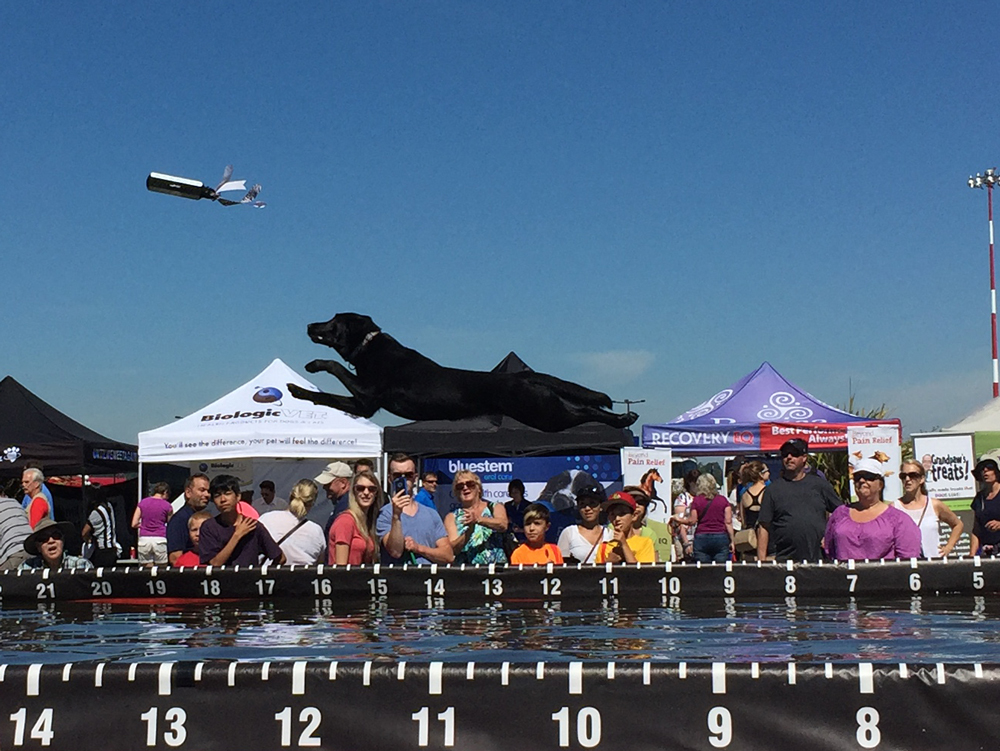Dead Heat


The days of summer are (finally) upon us; the government has issued a heat advisory for the end of the week so now is the time to seriously consider the perils of warm weather.
Dogs have a limited ability to sweat so even a short time in a hot environment can be deadly.
I have seen many cases of fatal heat stroke, and those cases, although varied, have all been devastating – for the treating team but obviously to a much larger degree for the grieving families. Heat stress happens very quickly and depending on a variety of factors can lead to heat stroke and what you might imagine Ebola to look like – bleeding, severe hemorrhagic diarrhea, organ failure and death.
There is no amount of time that is safe. Just don’t do it – not even for 5 minutes – even with open windows or in the shade.
Hot cars are not the only concern in the heat.
Dogs should not be tied up in the sun, nor walked in the hottest part of the day or on hot pavement.
A good idea is to decrease the amount of exercise and to exercise them in the early morning or evening when the air has cooled down and when the ground is cooler on their paws.
During heat waves, ideally dogs should be kept indoors (if it is cooler than outside) and make sure they are not confined somewhere where it could get too warm.
Some dogs do not temper their enthusiasm for playing in the hot weather and they need to be monitored and moderated.

Even when shade is provided, some dogs won’t have the good sense to go in it. My own dog has a black coat and loves to lie in the sun but very quickly starts panting excessively and has never seemed to have the foresight to get up and go in the shade. I usually move her inside after a few minutes.
Pay attention if your older large breed dog has noisy breathing or a change in his bark. Dogs with certain medical conditions (such as laryngeal paralysis which commonly affects older labs) will be intolerant of the warmer weather and can quickly develop heatstroke with even modest activity, like walking. The same can be said for smaller breeds who develop a honking cough with excitement or with heat which can be hallmarks of collapsing tracheas.
It is also good to remember that dogs with short noses (Pugs, French bulldogs and Japanese chins are examples – the models in this blog belong to our staff!), or thick coats, or if they are overweight or dark colored, will be more quickly affected by the heat.
An easy way to remember this is that if it’s too hot for you or if the sidewalk is too hot to touch for a few minutes, it’ll be too hot for your dog as well.

If you do walk your dog or the dog will be outside for any period of time, it is a good idea to carry water with you (I find collapsible water dishes useful) and offer it frequently to your pet. If you are hiking, try to hike where there is some shade and near streams of water where your dog can get wet if he feels too warm.
What are ways to cool off your dog?
- Shade
- Water to drink
- Fans
- Kiddie pools
- Sprinklers
- Hoses
- Lying on cool tiles (bathroom)
- Several recipes for doggie ice cream and smoothies are available
- Cooling collars and vests
- Booties (to protect the paws from the hot surfaces)
- Remove the thick undercoat with a grooming tool (such as the FURminator)
Most dogs like to stand in cool water (very refreshing for dogs and humans), but remember that not all dogs like water so do not try to force a reluctant dog to swim or go into a pool.
Looking at this dog from Victoria Pet-A-Palooza last week-end, he obviously did not have issues with plunging or swimming!

Sunscreen
If your dog has exposed skin (such as pink skin near the nose), consider applying suncreen before venturing outside. As dogs may lick the sunscreen, it is important not to use a sunscreen containing zinc (such as sun blocks). There are no approved pet sunscreens in Canada but baby sun blocks or sunscreens can be used.
Heat stress
Knowing how to recognize to signs of early heat stress will allow you to prevent the deadly consequences of heat stroke by providing first aid.
The early signs may be slowing down, reluctance to walk or run, wanting to stop, looking for shade or seeking water. Dogs may also look anxious, pant excessively and look like they are grimacing. Do not push them further at this point.
Offer water but do not force the pet to drink it.
Make sure that if your dog shows signs of heat stress that you cool him down with cool water (not ice).
The best is to remove them from the environment and bring them to a cool room or shaded area.
Use water or cool towels to cool the dog down, starting with the belly area.
If possible, take your dog to a veterinarian. Do not delay if signs of heat stroke are present or if the pet is not quickly improving.
If you can not take your pet to a veterinarian but can take his temperature, stop cooling measures when the temperature is below 39.8C.
Signs of heat stress
- Grimacing
- Anxiety
- Stressed eyes
- Red gums/dark tongue
- Seeking frequent rests/seeking shade
- Seeking puddles (to drink)
- In a car:
- Clawing at the inside of the car or windows trying to escape
- Attempting to stick their head/nose out a cracked window
- Slobbery nose or paw prints on the inside of the windows
Signs of heat stroke
These are variable, there is overlap with the signs above and occur to a varying degree
- Drooling
- Vomiting (which may contain blood)
- Diarrhea (which may contain blood)
- Fast/poor pulses
- Small pin point bruises that appear on the gums, inside of ears, throughout the skin
- Staggering
- Collapse, seizure or coma
There is also an excellent article from the Poison Control Centre in Illinois that highlights poisons as well as other hazards of summer. Read it here: http://www.petpoisonhelpline.com/pet-owners/seasons/summer-pet-poisons/

